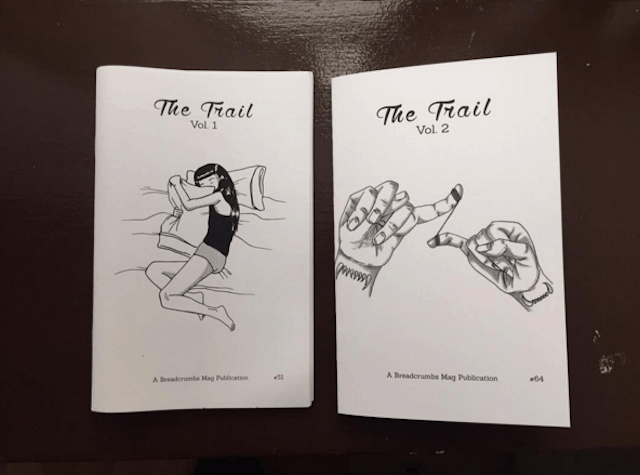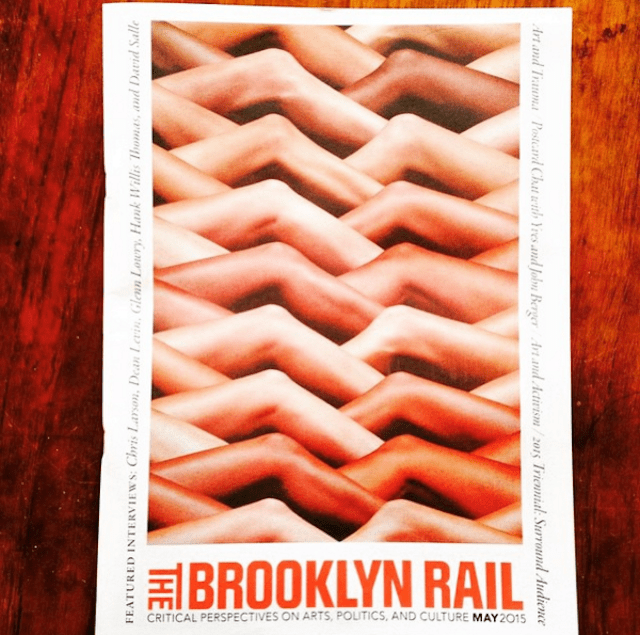
You wake up. You go to work. You come back, or you shack up in a late night café. You type into the wee hours of the night, laboring your masterpieces of poetry and prose, and after a day or week or month, you’ve finally got something you think other people should see. Now what do you do? Well sure, you could spend hours on the internet, researching the coolest literary magazines and online journals in Brooklyn, but that’s a pain in the ass. After all, you’ve abandoned sleep and substituted most of your meals with whiskey. Who has the time?
That’s why we’ve compiled our brief, but important list of Brooklyn literary magazines, complete with details on how submit to each one and where to find their publications (whether in stores or online). Be sure to familiarize yourself with the work of each one before submitting! Some mags are small seedlings in the literary scene, and others are big contenders that have reached all the way to the New Yorker. Either way, you’ve got to start somewhere, so why not here?
Electric Literature
Online
Electric Literature is “amplifying the power of storytelling through digital innovation.” It’s also a bit of a literary empire. If you read our other post about Brooklyn reading series, you’ll likely remember this name. Electric Literature is also the head of Recommended Reading, which publishes one new story a week, and Okey-Panky, a weekly magazine of short things. The magazine’s main goal is to create a vibrant community of readers and writers.
How to submit: Guidelines here. For Recommended Reading, submit 2,000 – 10,000 words of fiction. And hurry, since submissions will be closing at the end of May! For Okey-Panky, you can submit shorter works, as short as you like. But you’ll have to wait until August.
____________

Breadcrumbs
Est. Feb 2015
Online and in print
Breadcrumbs takes a communal approach to its material. All submissions must be based off, inspired by, or pay tribute to a previous piece in the magazine. And like breadcrumbs, the pieces are teeny tiny: 500-1,500 words of micro-fictions (yep) and poetry. If you hate having your work read on a screen, fear not: Breadcrumbs has recently ventured into the print world with “The Trail,” a quarterly zine released at their reading series. In addition to its literary stronghold, Breadcrumbs supports artists of all mediums and regularly hosts visual art and music events. You can also listen to their podcast.
How to Submit: All pieces must be inspired by one found on Breadcrumbs, but can take any format. Send all work, between 500-1,500 words, to submissions[at]breadcrumbsmag.com along with your name, a short bio, and the number of the piece that inspired you.
Bodega
Est. 2012
Online only
Want to start out the first Monday of the month with some quick reads? Just take a stroll to Bodega.com to read some lit you can “digest in one sitting.” The online mag is great for those looking to get a shorter piece published, and tends to favor poetry. Writers will be happy to know that they can submit at least two times a year.
How to submit: Bodega makes submitting easy by giving you a heads up before they publish your work, which means simultaneous submissions are okay! Keep submissions short, up to five poems or a 3,000-word fiction or nonfiction piece. You also get decent author rights, and the credit to say your writing lives inside a virtual bodega.
____________

The Brooklyn Rail
Est. 2000
Online and Print
The Brooklyn Rail began as a small print journal for L train commuters. 16 years later, the mag has expanded its reach to the web and curates “art exhibitions, panel discussions, reading series and film screenings.” The site features literature, but also focuses heavily on emerging art and culture. It maintains its printing tradition, and populates Brooklyn and Manhattan with free zines ten times a year. Find them here.
How to submit: Want to write for the Brooklyn Rail? Submissions must be sent to the editor running the section you’d like to write for. Before you do submit, be sure to read some previous work on the site or find a copy of the mag near you.
The Atlas Review
Est. 2013
Online
The Atlas Review wants to shake up the literary scene and break up the hierarchy. They like to see work that speaks for itself, as opposed to being placed under an “experimental” title. As they say on their website, “It’s all an experiment, and we are in it.” While they started as a print mag, the Atlas Review has since moved to a wholly online publication. This means they can pay their contributors, and one of those lucky paid writers could be you! Atlas has also expanded to chapbooks, and has a monthly reading series.
How to Submit: Guidelines are liberal, but read up on them here.The Atlas Review believes submissions should be judged anonymously without an ego-inflated bio. No name, Facebook stalks, Linkedin history, or Tinder reputation. No history of previous publication status is needed, either.
__________

Apogee Journal
Est. 2010
Online and in print
Apogee Journal was founded by students of color and international students from Columbia University. The writing in Apogee “engages with issues of identity politics: race, gender, sexuality, class, and hyphenated identities.” The journal hopes to bring change by showcasing these underrepresented voices. You can find copies at the Bureau of General Services–Queer Division, Bluestockings, and Book Court. Not near the stores? Don’t worry, you can read up on Perigee, their online publication.
How to submit: For Apogee, submissions open in mid-June. Submit 5,000 words for prose, up to 5 poems, optional cover letter, current bio, and simultaneous submissions are accepted. For Perigee the same rules apply, but keep all submissions under 2,500 words. Submissions are open.
Stonecutter
Est. 2011
In print
Stonecutter is nearing the launch of their fifth issue of their beautiful print magazine. They are young but active, compiling biannual editions of fiction, nonfiction, drama, interviews, translations and visual art. If you’d like to get your hands on a printed copy, you can order it online, or at Book Culture, Greenlight Bookstore, McNally Jackson, and St. Mark’s Bookshop.
How to Submit: While their submission period remains closed until later in 2016, that gives you plenty of time to work on your next piece and read the few engaging issues of Stonecutter. You can familiarize yourself with the submission guidelines in the meantime.
___________

Epiphany
Est. 2012
Print or E-book
“If an epiphany is a moment of sudden revelation, Epiphany, the literary journal, is a crucible of those moments.” Well, sure, and the writers that populate their mag are usually emerging and established. Like many journals on this list, they believe good work stands up for itself. Want a copy? Print and e-book editions are available online, or you can trek to Bouwerie Iconic Magazines, McNally Jackson, St. Mark’s Bookshop, and Magazine Cafe in the city. If you’re feeling frisky, you can even try your hand at the epiphany book kit, and make your own edition of the magazine.
How to submit: You’ll be happy to hear that contributors are paid a whopping $50! If you hurry you can still submit stories, poems, and artwork to Epiphany before June 1, their next submission deadline. Let them know if you are submitting simultaneously, and withdraw immediately if it has been accepted elsewhere. Find out more here.
Vol 1 Brooklyn
Est. 2009
Online only
Vol 1 features both short and long form content on its website, as well as producing a number of free cultural events “to bridge the gaps between various forms of culture and art.” The wealth of works coming from unheard-of, emerging contributors gives it a nice “writers writing for writers” feel. But what makes Vol 1 most appealing are the resources for said emerging literary types. Readers and writers alike can enjoy weekly round-ups of literary culture, called “Afternoon (or Weekend) Bites,” that cull the week’s best in writing from around the internet. Sundays and Wednesdays are reserved for original stories and essays, respectively, and the content is always fresh, as Vol 1 allows only one published piece per writer. They feature an extensive archive of book reviews as well, and are open to reviewing your book.
How to submit: For Sunday Stories, 3,000 words, fiction or memoir. Excerpts are okay if it can stand alone. And specify if it’s fiction or nonfiction. For Wednesday Essays, it’s a 4,000 word limit. Simultaneous submissions are permitted, but let them know if you’ve been accepted elsewhere. More on their submission guidelines here.
Slice
Est. 2007
In print
Slice has made a name for itself since Pulitzer Prize winning writer Junot Díaz called it “beautiful, compelling, irresistible.” Each issue the Brooklyn-based print magazine offers a theme around which authors of every caliber share the ideas and partake in interviews. The fiction and poetry is never bound by subject. You can subscribe to Slice or find copies in the Spring and Fall at this bodega, this smoke shop, and also the Barnes & Noble on Court Street.
How to submit: Guidelines here. Slice looks for fiction, nonfiction, and poetry. They prefer their fiction that isn’t overly “experimental” or bogged down by genre, so avoid starting your Young Adult teenage-witch-trapped-in-a-love-triangle franchise here. Like any of the magazines on the list, the best way to get in is to read the magazine. If you get in, you’ll get paid a nice chunk of change, but remember you’re contending with some of the best.
Leave a Reply



